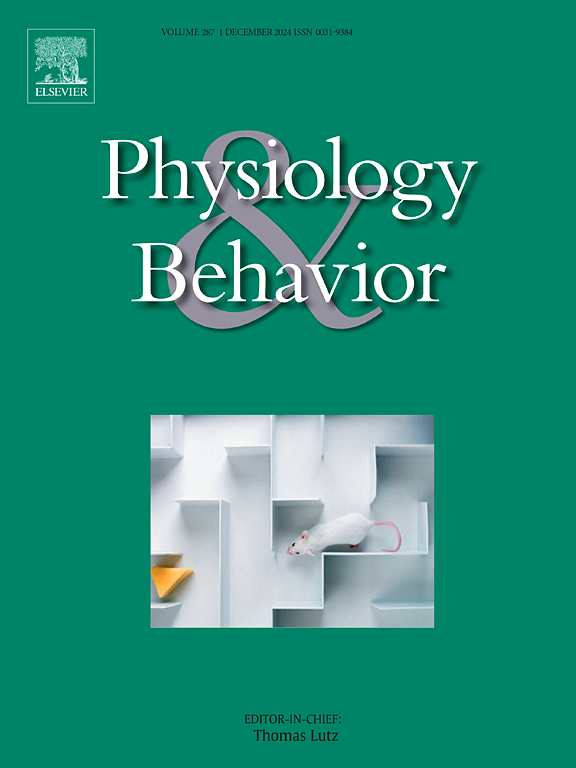利用行为和生物压力标记洞察收容所狗的结果
IF 2.5
3区 医学
Q2 BEHAVIORAL SCIENCES
引用次数: 0
摘要
寻找最佳的工具来评估动物收容所的压力,可以通过识别长期停留和安乐死的风险来保护动物的福利。本观察性研究的目的是探讨犬舍内行为、粪便皮质醇和免疫球蛋白A (IgA)浓度作为收容所结果和停留时间指标的效用。在2023年10月至2024年7月期间,224只狗从宾夕法尼亚州的三个动物收容所登记入组。在进入避难所后的两个时间点(0-48 h, 7-9天)收集粪便样本和行为视频,分别使用elisa和BORIS行为软件进行分析。在进入收容所时,狗的行为在很大程度上与不被收养的结果有关。例如,回到主人身边的狗喘气次数增加(X2=13.38, p <;0.01),而安乐死和转移的狗坐着的时间比收养的狗少(X2=13.98, p <;0.01)。对于留在收容所一周的狗来说,收容所的结果在很大程度上与人类指导的行为有关。被收养或被转移的狗比被安乐死的狗(X2=6.66, p = 0.04)花更多的时间将前爪放在笼子上站立(X2=7.95, p = 0.02)和摇尾巴。被收养的狗在基线时的皮质醇浓度显著高于转移的狗,但在第一周时没有(F(2,78)=4.05, p = 0.02)。IgA与住房结果无显著关系。我们的研究结果表明,窝内行为观察可能为收容所评估压力提供最有用的信息。压力生物标志物并没有提供关于庇护所结果的明确见解,但强调了进一步研究庇护所中适应性应对方式的必要性。本文章由计算机程序翻译,如有差异,请以英文原文为准。
Insights into shelter dog outcomes using behavioral and biological stress markers
Finding optimal tools to assess stress in animal shelters could protect welfare by identifying animals at risk of long stays and euthanasia. The goal of this observational study was to explore the utility of in-kennel behavior, fecal cortisol and immunoglobulin A (IgA) concentrations as indicators of shelter outcomes and length of stay. Between October 2023 and July 2024, 224 dogs were enrolled from three animal shelters in Pennsylvania. Fecal samples and behavioral videos were collected at two timepoints after shelter entry (0–48 h, 7–9 days), and analyzed using ELISAs and BORIS behavioral software, respectively. At shelter entry, canine behavior was largely associated with non-adoption outcomes. For instance, dogs who were returned to their owners showed increased panting (X2=13.38, p < 0.01), while euthanized and transferred dogs spent less time sitting than adopted dogs (X2=13.98, p < 0.01). For dogs who remained in the shelter at one week, shelter outcomes were largely associated with human-directed behaviors. Dogs who were adopted or transferred spent more time standing with their front paws on the cage (X2=7.95, p = 0.02) and wagging their tails than euthanized dogs (X2=6.66, p = 0.04). Adopted dogs had significantly higher cortisol concentrations than transferred dogs at baseline, but not at one week (F(2,78)=4.05, p = 0.02). IgA was not significantly related to shelter outcomes. Our findings suggest in-kennel behavioral observations may provide the most useful information for shelters to assess stress. Stress biomarkers did not offer definitive insights about shelter outcomes but highlighted a need for further research into adaptive coping styles in the shelter.
求助全文
通过发布文献求助,成功后即可免费获取论文全文。
去求助
来源期刊

Physiology & Behavior
医学-行为科学
CiteScore
5.70
自引率
3.40%
发文量
274
审稿时长
47 days
期刊介绍:
Physiology & Behavior is aimed at the causal physiological mechanisms of behavior and its modulation by environmental factors. The journal invites original reports in the broad area of behavioral and cognitive neuroscience, in which at least one variable is physiological and the primary emphasis and theoretical context are behavioral. The range of subjects includes behavioral neuroendocrinology, psychoneuroimmunology, learning and memory, ingestion, social behavior, and studies related to the mechanisms of psychopathology. Contemporary reviews and theoretical articles are welcomed and the Editors invite such proposals from interested authors.
 求助内容:
求助内容: 应助结果提醒方式:
应助结果提醒方式:


